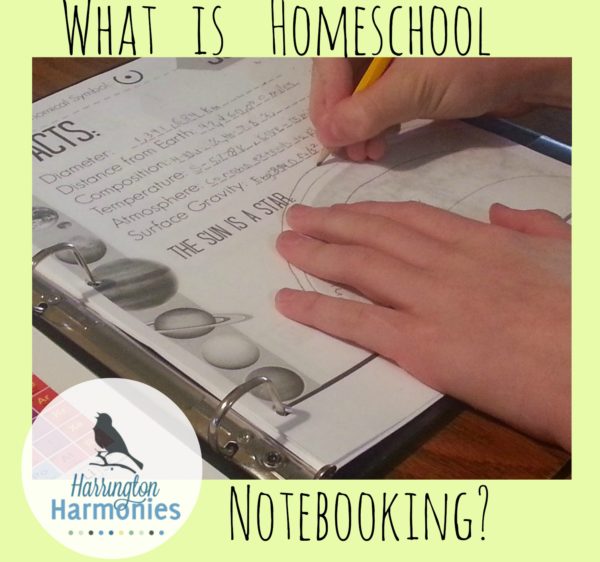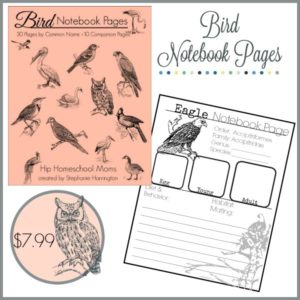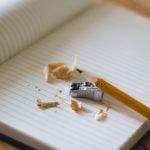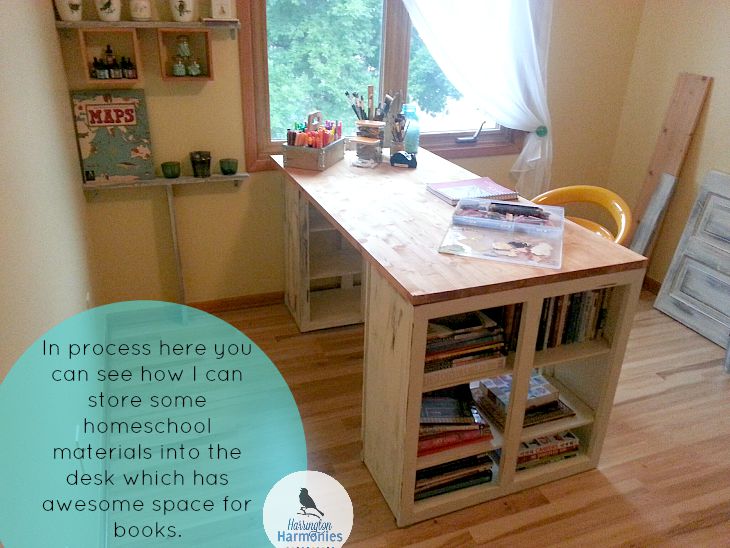 What is the difference between Homeschool Notebooking and Journaling?
What is the difference between Homeschool Notebooking and Journaling?
Notebooking is very similar to journaling, but there are a few distinction in how they are utilized and stored. While journaling requires a bound journal or book with blank pages for writing, notebooking is best when using pre-made and themed notebooking pages and then filing them into a binder, usually a three ring binder.
I suppose in the loosest sense, notebooking could refer to using blank sheets of notebook paper and inserting them into a binder. But in that case, notebooking and journaling would really be about the same thing. Notebooking refers to the filling in of facts and information on sheets created for or on a particular subject.
Homeschool Journaling
When I was homeschooling my older children, they each had hardbound legal size lined journals in which they wrote several types of assignments- from book reports to creative writing paragraphs. Other uses for their journals would include drawing maps and diagrams for science, poetry, copywork, nature walk findings, narrations, etc. We used the journals for every subject (except math) and it was the only notebook we had for over three years time. 
It was the best season of homeschooling in my life! We mainly read tons of great books and then I had the children write. It was a time of free homeschooling for me. During their middle school years, we lived overseas and I had the freedom to really homeschool the way I wanted. The timing was very good. We took nature hikes every week, explored the country, and I assigned a research project each week~ alternating science and history topics and added math for a complete program. And so, they wrote, wrote, wrote in their journals.
⇒Read more about homeschooling with journals.
 Homeschool Notebooking
Homeschool Notebooking
So if notebooking is simply just “filling in facts” on a sheet and inserting them into a binder, then why is that any different from just doing worksheets? Here is why: the philosophy behind notebooking, true notebooking, offers the child freedom in what facts they record, what pictures they draw and then they can highlight the information they felt was significant from a book, project or other learning experience. Some notebooking pages do ask for specific information; but they should always offer more open ended space than a typical worksheet.
How do I know which style, journaling or notebooking, is best for my child?
I got involved in making notebooking pages with my youngest child because he is such a reluctant writer. I quickly realized that journaling with him was not going to work. He found notebooking pages easier to manipulate than a blank journal. Notebook pages didn’t overwhelm him as much and they offered the same opportunity for creative learning. He needed something with a simple feeling framework to get started.
My two older children in contrast, who were naturally good writers and very creative, thrived on the freedom a journal offered. I only gave them a few directives to get them started and then they soared with it. They had no trouble writing a mini report on what information was meaningful to them. But my reluctant writer, I could see that he needed short and concise, less intimidating boxes and lines to be filled in.
Notebooking isn’t for everyone and don’t do it for every subject. Pick one or try it with a project or unit of study to see how it goes for a while.
When thinking about whether to go with a journal format or notebooking, consider your child’s learning style and ability. Teaching styles also play a role. You can take a hands on approach, classical, or any that you find natural and appealing because notebooking is so flexible. They can also be used with any age as long as your expectation of filling them out is appropriate. Another plus is that it frees you up considerably and requires your child to take initiative.
And-here’s a special limited time build your own bundle you may like if you want to get a bunch of notebook pages at a crazy low price!

- State Notebook Pages
- Insect Notebook Pages
- Artist Notebook Pages ( Subscribers only)
- GardenNotebook Pages ( Subscribers only)
- Solar System Pages ( Subscribers only)

























7 Comments
Maria Piziali
Hey Steph! My ex, his wife and I have decided to homeschool this year. His wife will be working primarily with the boys on the core subjects, while I’ll be working with them on art and music, due to my time restrictions for work. She’s talked about journaling, and I’m having a difficult time understanding how my Kindergartner (especially) and 2nd grader will be able to do this. I really like the concept of notebooking though, so thank you for the information! We’ll have to explore this further. Also, I love all your art lesson ideas. Any links for younger boys?
Stephanie
Hey there! That’s fantastic. I think journaling is possible with the younger boys it just has to be left open ended with lot of room for pictures and creative spelling at first. It’s not good to over correct at that young age so let them make mistakes till they are fluent readers and more established writers and try to keep that in the formal grammar lesson. Try to keep journaling as positive as possible when starting so young. As for links, yes. I have stuff from when John was younger let me find a few of those for you!
Okay so, thesis from John’s second grade: http://harringtonharmonies.com/2012/05/recommended-historical-fiction-for-boys.html
This book list is also for all ages: http://harringtonharmonies.com/2015/02/living-book-list-for-ancient-history.html
Tangrams would be fun: http://harringtonharmonies.com/2015/04/how-to-make-tangrams.html
I have many others i could recommend is there a subject you need info on?
Maria Piziali
Thank you! I’ll share these links with them as well. I’m personally interested in art project/lesson ideas for younger kids and wondered if you had anything that worked well for you. I’m not sure how in-depth to go with them at this early stage. I’ll be primarily focusing on the art and music subjects this year. I’ve got the music part down 😉 It seem like art can be complicated, even though it shouldn’t be… seems like your forte so I thought I’d reach out to you on the subject. 🙂 Thanks, Steph!
Stephanie
Absolutely! I have a ton on art! Since they are still little you can do picture study with them and I can suggest some great books for that for that age. One is: A Child’s Book Of Art
Another favorite of mine is: Linnea in Monet’s Garden
Perhaps I can put together an nice booklist for you and post it!
This post also has some good books by usborne for little people : http://harringtonharmonies.com/2015/01/kids-books-art-history.html
You mainly want to have them experiment at this age with all sorts of mediums. You can talk about line, shapes and form with them. Color is also a great lesson- mixing colors etc. I will look around the blog for some projects I think they could totally do!
Maria Piziali
Awesome, thank you for the info and your help!
LaToya
Stephanie this is so good! I am definitely more of a journal person which is why lapbooking drives me bananas. But both my boys really love notebooking. I discovered that this year as they worked on history pages. They love drawing out what they have learned so we are sticking with that!
Stephanie
It’s all about finding what works for you! My son does not enjoy lap booking as much as notebooking. Just too much hands on for him as he is an auditory learner. So, the main thing is finding what works for our kids. 🙂